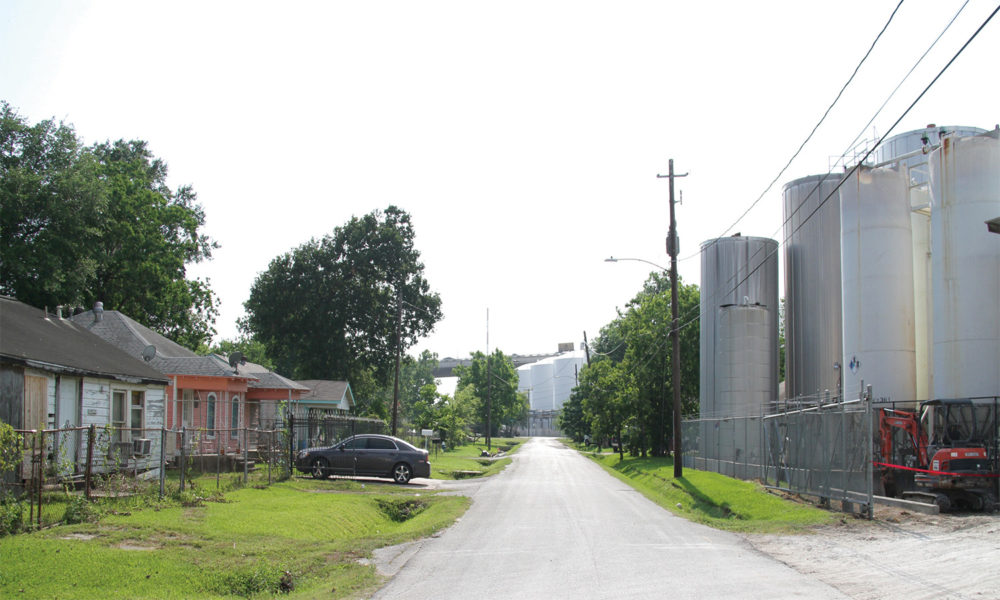This post was co-authored by Dr. Jacob Carter.
1,336. That’s the number of facilities in the US called Superfund sites, which are contaminated with some of the most dangerous toxic pollutants. These sites have been deemed so harmful to health that they are listed on something called the National Priorities List (NPL) and their cleanup is handled by the Environmental Protection Agency (EPA). The federal monetary fund for clean-up and remediation of these facilities, commonly known as the Superfund, was established in 1980 through the congressional Comprehensive Environmental Response, Compensation and Liability Act (CERCLA).
Superfund sites are locations polluted with toxic substances that have been left out in the open, dumped, or otherwise improperly managed. Many of these facilities manufactured goods under federal contracts during the Second World War. Releases of toxic substances such as those in Superfund sites (e.g., lead, trichlorethylene, chromium, benzene, and arsenic) into the air, surface water, groundwater, and into communities are a very serious public health threat that can lead to various harmful health outcomes, including neurological damage especially among children.
Since 1982, about 25 percent of Superfund sites have been cleaned up and deleted from the list, a designation given to a site after “all response actions are complete and all cleanup goals have been achieved” according to the EPA.
The EPA has claimed substantial recent progress in Superfund site cleanups, but, contrary to EPA leadership’s grandiose declarations, the backlog of unfunded Superfund cleanups is the largest it has been in the last 15 years. The Christian Science Monitor reported that Superfund cleanup completion was the lowest it had been since 1986 during the fiscal year of 2019. While EPA started off strongly in deleting Superfund sites from the NPL in 2017 and 2018, a decreasing agency budget is now slowing the progress of cleanups.
It also seems that sites whose cleanups were completed in 2017, 2018, and 2019 were likely done so for political expediency, according to a recent report from Politico. Therefore, we conducted an analysis to determine what may have been going on at these sites. We found that Superfund sites deleted from the list during 2008-2016 are clustered in urban areas in the Midwest and the Northeast, and two sites were deleted in Puerto Rico and St Thomas (US Virgin Islands). Census tracts hosting these facilities have large percentages of people of color. In contrast, sites deleted since 2017 are located in communities with low percentages of people of color.
A look at the Superfund deletions data
What do the Superfund deleted sites data show? We dug into the EPA’s Deleted National Priorities List Sites (containing 429 sites as of September 21, 2020). We tallied the number of sites deleted in each fiscal year (i.e., a site with a deletion date between October 2009 and the end of September 2010 is considered deleted in 2010). Superfund site cleanups can take several years, so deletions in any particular year may reflect the end of a cleanup process that began in years past.
Data regarding deletion of sites on the NPL date back as far as 1982, and the all-time largest number of deletions occurred in 1996 during the Clinton administration. Since then, the trend has been generally decreasing. Deletions during the Obama years generally increased between 2009 and 2014 (peaking at 12 deletions in 2014), then dropped significantly. In 2018, deletions increased to 17, and have dropped since then (keep in mind that data are current as of September 2020, so data for that last year are incomplete as of this writing). A greater number of deletions may have been possible earlier due to sites that may have not been as significantly contaminated – many sites currently listed on the NPL have major levels of contamination and can take, in some cases, decades to cleanup. Funding for cleanup also was greater prior to the mid-1990s due to a tax on petroleum and chemical industries that Congress chose not to reauthorize in 1995. The funding for the program has decreased since then from $4 billion to around $1 billion today, which has led to a decrease in cleanups.

As shown on the map below, Superfund sites deleted from the list during 2008-2016 are clustered in urban areas in the Midwest and the Northeast, and two sites were deleted in Puerto Rico and St Thomas (US Virgin Islands). Census tracts hosting these facilities have large percentages of people of color. In contrast, sites deleted since 2017 are located in communities with low percentages of people of color (see figure below).

Communities of Color are Neglected
Communities of color are more exposed to toxics than white populations because they live closer to Superfund sites than white populations. In 2017 the EPA estimated that people of color accounted for nearly half of the total population living within three miles of all Superfund sites, and that this represented 21 percent of all persons of color living in the United States at the time. In a recent report, the Shriver Center on Poverty Law highlighted that 70 percent of the Superfund sites listed on the NPL are located within one mile of government assisted housing, which is home to an estimated 77,000 people. Many in communities of color also live in poverty, don’t have a high school diploma, or are linguistically isolated (i.e., don’t speak English well), all socio-economic conditions that limit the resources that communities have to protect themselves against toxics and other dangerous environmental hazards.
To what extent have Superfund site cleanups benefitted the most underserved populations?
We looked at the race/ethnicity composition of communities with deleted NPL sites for three categories: sites deleted during 2008-2016, sites deleted since 2017, and sites not yet deleted. Superfund site deletions since 2017 have targeted a smaller share of communities of color as compared to those deleted during 2008-2016: 24.8 percent, or about 41,000 people between 2017-2020, versus 33.5 percent (about 107,000 people). The difference of nearly 9 percent points indicates that recent Superfund site cleanups have neglected communities of color. In addition, a lot of work to protect communities of color from Superfund site toxics remains to be done: nearly one-third (31.7 percent) of the 6.1 million living in census tracts with Superfund sites that have not been cleaned up are people of color.

Stop Ignoring Underserved Communities, EPA
Vulnerable communities have long been in the fight to demand justice when Superfund sites pose disproportionate risks to their health. It has been known for decades that race is a significant predictor of the location of hazardous facilities, yet these inequities continue to exist—even as EPA administrator Wheeler has stated that “All Americans deserve timely action on Superfund site cleanups in their communities—not delays.”
But here we still are demanding action for communities of color over and over and over. We see the data. Underserved communities are being neglected as the Superfund budget continues to dwindle. Everyone deserves the right to live without the fear of being at a heightened risk of cancer due to a company’s past mistakes – EPA would do well to remember that all people in the US are deserving of help.

